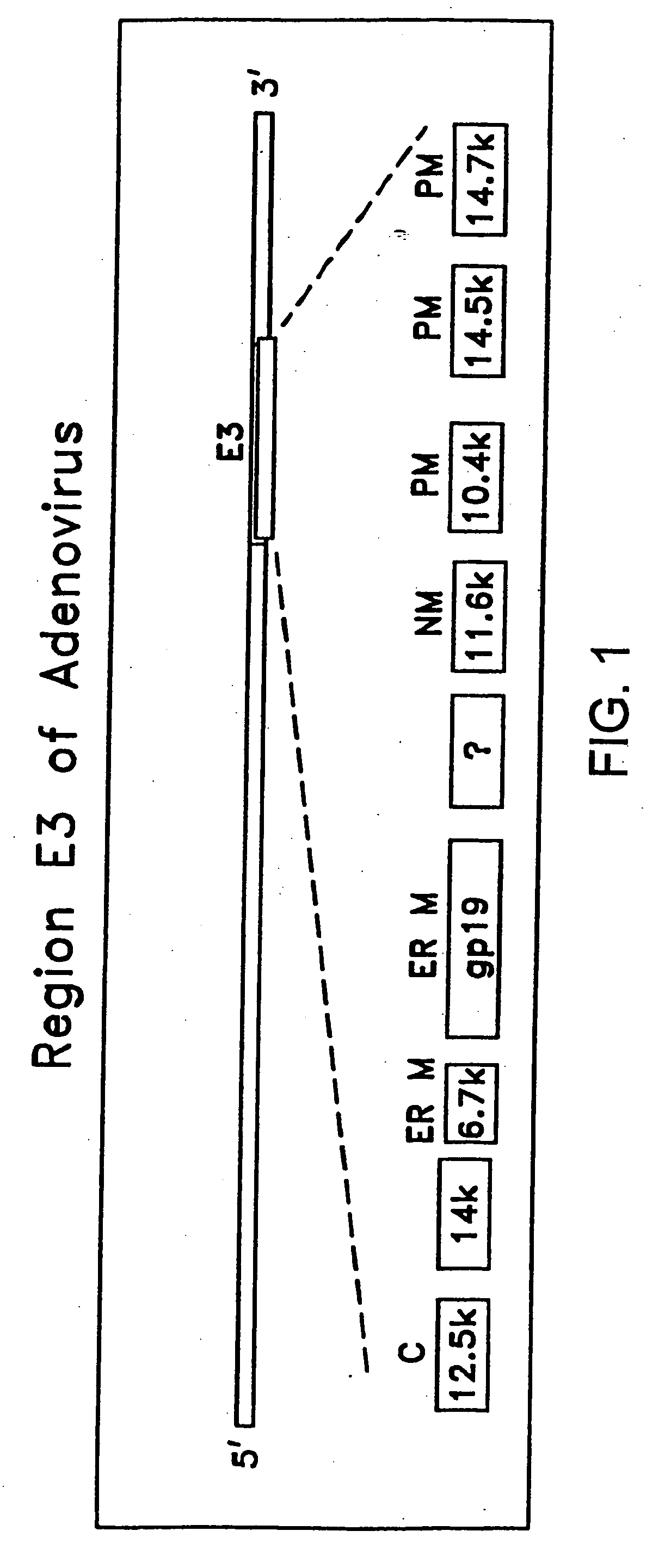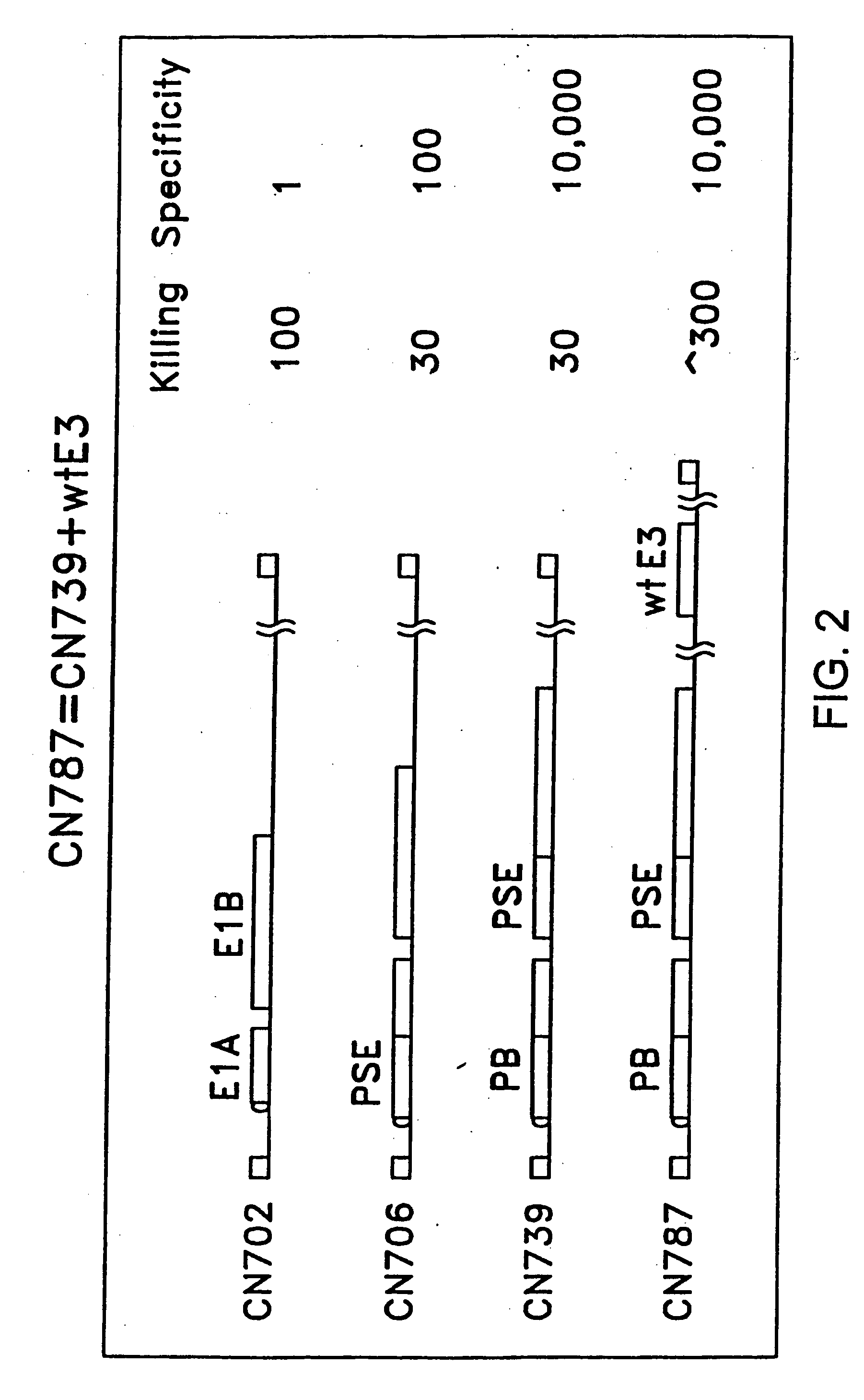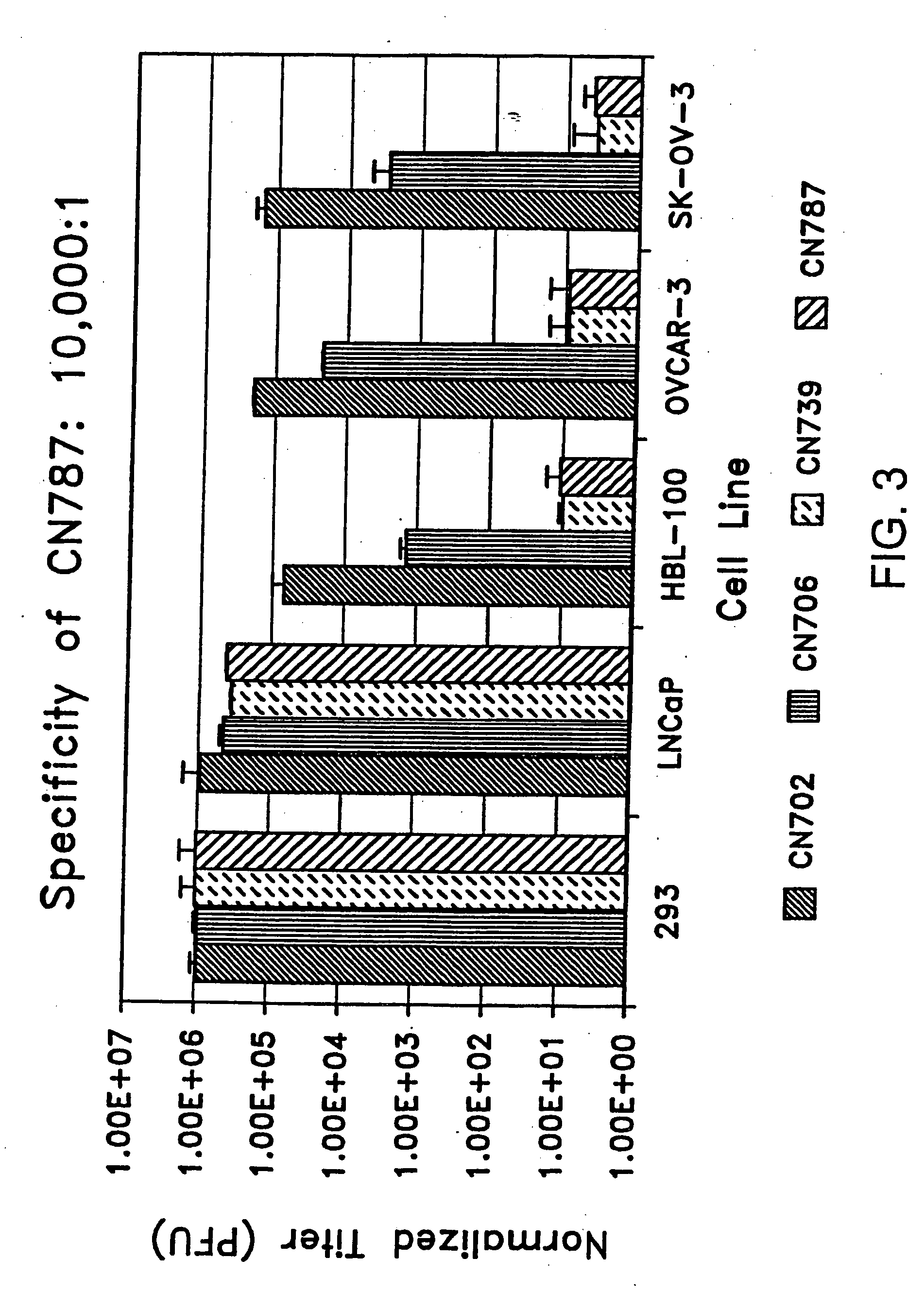Target cell-specific adenoviral vectors containing E3 and methods of use thereof
a technology of adenoviral vectors and target cells, applied in the field of adenoviral vectors and transfection, can solve the problems of unaffected normal cell function, difficult to eradicate, and significant failure rate of traditional clinical care, and achieve the effect of enhancing adenoviral production and cytotoxicity
- Summary
- Abstract
- Description
- Claims
- Application Information
AI Technical Summary
Benefits of technology
Problems solved by technology
Method used
Image
Examples
example 1
Construction of Target Cell-Specific Adenoviral Constructs Containing an E3 Region
[0218] Target cell-specific adenoviral vectors were constructed by first generating target cell-specific adenoviral vectors and / or adenoviral plasmid vectors lacking an E3 region, then recombining these vectors with E3-containing adenoviral constructs.
[0219] With respect to adenoviral constructs (as opposed to precursor plasmid constructs), it is understood that “CN” and “CV” designations may be used interchangeably. For example, CN787 and CV787 refer to the same adenoviral construct.
Generation of Adenoviruses and Adenoviral Plasmid Vectors that Contain Target Cell-Specific TREs Driving Expression of E1A and / or E1B
[0220] A human embryonic kidney cell line, 293, efficiently expresses E1A and E1B genes of Ad5 and exhibits a high transfection efficiency with adenovirus DNA. For these experiments, 293 cells were co-transfected with one left end Ad5 plasmid and one right end Ad5 plasmid. Homologous rec...
example 2
In vitro and in vivo Characterization of CN787, an E3 Containing Adenoviral Construct Comprising a PB-TRE Driving Expression of E1A and a PSA-TRE Driving Expression of E1B
Cells and Culture Methods
[0254] LNCaP cells were obtained at passage 9 from the American Type Culture Collection (Rockville, Md.). LNCaP cells were maintained in RPMI 1640 medium (RPMI) supplemented with 10% fetal bovine serum (FBS; Intergen Corp.), 100 units / mL of penicillin, and 100 units / mL streptomycin. LNCaP cells being assayed for luciferase expression were maintained in 10% strip-serum (charcoal / dextran treated fetal bovine serum to remove T3, T4, and steroids; Gemini Bioproduct, Inc., Calabasas, Calif.) RPMI. The cells were periodically tested for the production of PSA which was consistently above 20 ng / mL per day.
Transfections of LNCaP Cells
[0255] For transfections, LNCaP cells were plated out at a cell density of 5×105 cells per 6-cm culture dish (Falcon, N.J.) in complete RPMI. DNAs were introduced...
example 3
In vitro and in vivo Characterization of CN790, an E3-Containing Adenoviral Construct comprising AFP-TREs Driving Expression of E1A and E1B
In vitro Characterization of CN790
[0270] To determine whether adenoviral construct CN790, described above, replicates preferentially in liver cells, plaque assays were performed as described in Example 2. The results, shown in FIG. 12, are expressed as percent of wild-type (CN702) adenovirus plaque-forming units (PFU) per ml. The average titer of duplicate samples for the viruses tested. The titer for a particular virus in all cell lines was normalized to its titer on 293 cells. Once the titers on a cell type were normalized to 293 cells, the normalized numbers of the recombinant viruses were compared to CN702. A ratio of less than 100 suggests that the virus tested plaques less efficiently than CN702. Conversely, a ratio greater than 100 suggests that the virus plaques more efficiently than CN702.
[0271] CN790 showed a plaquing efficiency com...
PUM
 Login to View More
Login to View More Abstract
Description
Claims
Application Information
 Login to View More
Login to View More - R&D
- Intellectual Property
- Life Sciences
- Materials
- Tech Scout
- Unparalleled Data Quality
- Higher Quality Content
- 60% Fewer Hallucinations
Browse by: Latest US Patents, China's latest patents, Technical Efficacy Thesaurus, Application Domain, Technology Topic, Popular Technical Reports.
© 2025 PatSnap. All rights reserved.Legal|Privacy policy|Modern Slavery Act Transparency Statement|Sitemap|About US| Contact US: help@patsnap.com



